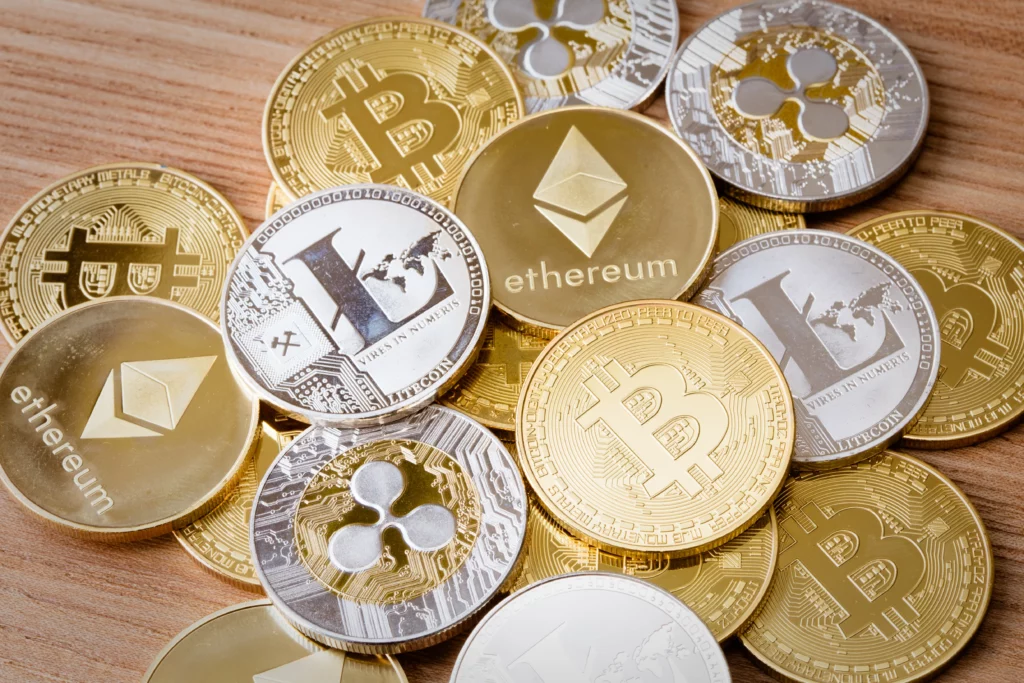Over the past couple of years, crypto has really taken off and successfully captured mainstream attention and gained widespread adoption.
It all started in 2008 with pseudonymous Satoshi Nakamoto’s whitepaper on Bitcoin. Since then, the crypto space has grown tremendously. During this time, crypto market capitalisation exceeded $3 trillion, with the number of projects and tokens in the space skyrocketing.
As a pioneer of smart contracts, Ethereum, in particular, has been leading this market growth. The smart contraction functionality drew in developers in hordes which not only led to the rise of layer 1s like Solana, Polkadot, and Avalanche but also L2s like Arbitrum and Optimism as faster and cheaper alternatives to Ethereum.
There has also been rapid innovation in the crypto industry in terms of non-fungible tokens (NFT), crypto games or GameFi or play-to-earn (P2E), metaverse, and decentralised finance (DeFi).
The Web3 space, for instance, has become massive, with interest, talent, and money pouring in. That said, these different ecosystems are growing in silos, which brings its own set of problems.
By virtue of being distinct blockchains, the assets contained in wallets on these chains aren’t inherently interoperable. This means centralised platforms continue to be the most convenient way for users to move assets between these blockchains.
Because of all this, interoperability and composability are the need of the hour in DeFi as protocols try to move value seamlessly across different blockchains.
But before we delve further into this and how different blockchains work in DeFi, let’s first cover the most important thing.
What is DeFi?

Decentralised finance or DeFi is an emerging financial technology based on distributed public ledgers. The system focuses on peer-to-peer financial services and removes intermediaries like banks and institutions from the equation.
Instead of a handful of financial institutions having control over money and financial products and services, in DeFi, the control is in consumers’ hands. Centralised systems and gatekeepers limit the speed and sophistication of transactions. So, by eliminating them, DeFi removes the fees that banks and other financial companies charge for using their services.
The biggest attraction of DeFi is that it is open and permissionless, meaning anyone with an internet connection can access DeFi protocols without needing approval from anyone. Here, users can transfer funds in seconds, and you hold your money in a secure digital wallet.
It further offers the benefit of pseudonymity as you don’t have to provide your name, email address, or personal information to access DeFi protocols. The sector is also much more flexible, fast, and, more importantly, transparent, which means everyone involved can see the full set of transactions on-chain.
Between March 2020 and December 2021, the DeFi sector recorded immense growth as the total assets locked in it went from less than $400 million to over $180 billion.
DeFi basically expands the use of blockchain to more complex financial use cases. With DeFi, you can do most of the things that banks support.
By building on top of Bitcoin and Ethereum, DeFi is creating a whole new digital alternative to Wall Street but on blockchain and without the associated costs. DeFi aims to create more open and fair financial markets. Users typically engage with DeFi via software called decentralised apps (dApps).
Some of the most popular types of DeFi applications include stablecoins, DEXs, lending platforms, insurance, “Wrapped” bitcoins (WBTC), and prediction markets. Even new DeFi concepts have sprung up around them in the form of yield farming and liquidity mining.
However, DeFi is not without its issues. Besides crypto being highly volatile, DeFi can be expensive during periods of high activity. Scams, rug-puls, and hacks are also something to always be mindful of in this sector. Lack of regulatory clarity means you have to maintain your own records for tax purposes.
Cross-Chain VS Multi-Chain in DeFi

As discussed above, today, there are hundreds of blockchains working in DeFi. Ethereum has the most popular DeFi ecosystem, but native assets of other blockchains like BTC and DOT aren’t compatible with it. Meanwhile, high fees in Ethereum have users migrating to other DeFi ecosystems, and yield seekers don’t want to limit themselves to a single ecosystem but rather make the most of existing platforms.
For Web3 developers, communicating with blockchains has become critical to growing a protocol.
This is where multichain and cross-chain come into the picture. The difference between multichain and cross-chain is all about how dApps and digital assets are bridged from one blockchain to another.
In a multichain ecosystem, two projects exist properly in their entirety on two separate blockchains. This involves wrapping a version of the crypto asset to move to different blockchains. By virtue of the structural consistency, bridges within these networks are more secure than cross-chain bridges.
Currently, cross-chain bridges are more popular in space which involves representing the crypto assets as tokens on other blockchains. This requires cross-chain bridges such as Binance Bridge or Wormhole Bridge, resulting in centralisation and security issues.
Benefits & Trade-Offs

Back in January 2022, Ethereum co-founder Vitalik Buterin published a Reddit post explaining his view that instead of pursuing cross-chain implementations, projects will evolve to embrace a multichain approach.
Taking a multichain approach means a project existing on two blockchains simultaneously. Storing native assets on its own chain, i.e., Ethereum on Ethereum and Solana on Solana, provides a certain degree of immunity against 51% attacks. This is because even if hackers manage to reverse or censor transactions, they cannot propose blocks.
As such, risk is compartmentalised to each blockchain, unlike in cross-chain solutions where networks effectively link the security of the blockchains they connect via centralisation. As more blockchains are bridged, the level of interdependence increases, which can lead to the security issues scaling negatively and cause a system-wide contagion.
In cross-chain, a 51% attack on one chain holds the potential to create instability across all of the connected chains. If we go by numbers, a total of about $1.4 billion has been lost to breaches on cross-chain bridges since the start of the year, according to blockchain analytics firm Chainalysis.
While a multichain approach may involve less technical risk, the cross-chain approach has its benefits, too, in the way that it can be simpler to implement. Unlike multichain, cross-chain solutions are pretty straightforward and don’t require you to build the infrastructure needed to support a protocol on every chain in the network.
Also, due to certain solutions being regulated, it can reduce risk by offering the benefit of insurance to an extent. The different ways to bridge tokens in the cross-chain model include unregistered custodian, regulated custodian, and decentralised bridge.
Custodians are simply the middlemen that accept tokens from one blockchain and send an equivalent value of tokens to a different blockchain. While when using bridges managed by unregistered custodians, users need to consider risks, SEC-qualified custodians are required to obtain insurance, so there’s some reprieve for users in the event of a hack, technical failure, or other black swan situation. Being SEC-registered means custodians can serve institutional clients like banks and trust companies.
When it comes to decentralised alternatives, they definitely have their benefits over centralised options, but technical obstacles need to be considered when using them.
For bridges to operate correctly, they rely on verifiers. Bridges can be verified in three different ways:
Natively-verified bridges such as Cosmos IBC use the verifiers of the blockchains that they connect. Externally-verified bridges such as Anyswap rely on a third-party validator. Locally-verified bridges like Connext require the parties involved in a transaction to verify the interaction.
Cross-chain solutions, however, require a robust ecosystem of different bridges to remove the problems and work efficiently.
Conclusion

While Ethereum remains the king of smart contract platforms, each ecosystem has its core strength, developer pools, and use cases. The crypto sector aims to enable developers to deploy dApps from any chain to any other chain hassle-free. This requires seamless sharing of ecosystem strengths through smart contracts.
For this future, where there is more than one blockchain, we need interoperability and composability. Interoperability implies a seamless transfer of assets, while composability essentially implies the ability to deploy any dApp on any chain with minimum friction and time.
For now, interoperability and composability are broken. But the thing is, decentralised finance is still new and experimental, which means while there are tons of benefits in the form of transparency, speed, cost, decentralisation, and permissionless, the ecosystem is also riddled with infrastructural mishaps, hacks, and scams.
So, while Buterin makes a strong argument for going with multichain, the advantages of cross-chain implementations can’t be ignored.
The multichain approach clearly offers greater security but building a safer infrastructure requires more time, money, and effort. Implementing cross-chain solutions, on the other hand, is a more straightforward proposition.
Both approaches simply have their benefits and trade-offs. This means we’ll be seeing both approaches play a crucial role in advancing the blockchain ecosystem. When deciding which solutions to pursue, builders need to look into how implementing each approach affects the scaling of a blockchain ecosystem.









